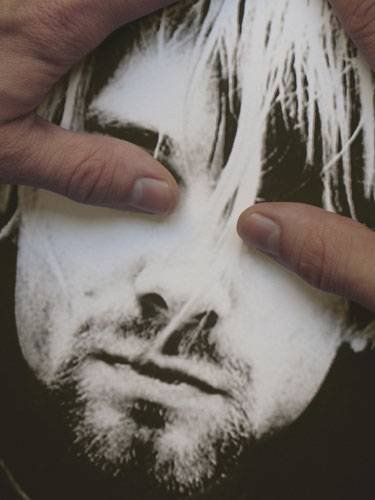Private Stories - Public Histories
dal 19/1/2007 al 23/2/2007
Segnalato da
19/1/2007
Private Stories - Public Histories
Motive Gallery, Amsterdam
Works by Dorothee Meyer, Magnus Monfeldt, Marjolein Rothman, Martine Stig and Lucy Orta

Works by Dorothee Meyer, Magnus Monfeldt, Marjolein Rothman, Martine Stig and Lucy Orta
Motive Gallery, Amsterdam, is pleased to present 'Private Stories - Public Histories', a group show featuring works by Dorothe'e Meyer, Magnus Monfeldt, Marjolein Rothman, Martine Stig and Lucy Orta.
The articulation of the private and the public realms has always constituted an object of inquiry within different fields of knowledge. Yet, today more than ever, the increasing invisibility of monitoring systems (surveillance cameras, bodily implanted chips etc.) and the promotion of individual control techniques based on the voluntary public exposure or mise-en-scene of the self (consumers’ surveys, reality shows etc.) have helped to bring the issue to the fore as the juncture between public and private sphere has undergone a drastic reconfiguration. Within the debates surrounding the challenges and drawbacks of this contemporary reality, the question of representation has become crucial. Whether it is of an iconic or more abstract kind, the concept of representation always implies the construction of an image that seeks to embody specific norms and value while inviting the subject to identify with it. It might be said, for instance, that history - as a form of storytelling — is a representation of the past, the construction of an image that provides a specific collective memory and, therefore, identity for the subjects who embrace it as their own. In fact images play an instrumental role within the changing dynamic existing between the public and the private realms. By way of themselves creating images, the different artists show-cased in the group exhibition 'Private Stories - Public Histories' address in multiple and personal fashions the question of the power of representations to shape collective and personal identities at times when public histories are shaping individual memories and private stories, history.
German born artist Dorothe'e Meyer (1973) presents photographs out of her series 'Maibaum'. These feature a custom traditionally performed on the 1st of May throughout Germany. As the folkway goes, bachelors decorate the front trees of their beloved houses. They stay there for the night to watch over their presents while women will have to wait for some three weeks to discover who declared themselves anonymously. Meyer’s choice to capture this ritual seems to inscribe her work within a tradition of anthropological enquiries. Yet, her work transcends the documentary and reaches the metaphoric as the photographs come to stand for the importance and changing fate of a tradition that goes back to the sixteenth century. Hence her photographs constitute poetical invitations to reflect on the becoming of history conceptualized as a process in which the meaning of things and events (as for instance group rituals) are constantly being redefined and renegotiated.
Magnus Monfeldt (1973) is a multi-faceted Swedish artist who works with a variety of media. Since a few years, Monfeldt has been interested in the identity politics of perception and has produced an array of different works conceptualized around the issues of memory and remembering. For this exhibition, he created two works one of which results from the appropriation of a portrait of Kurt Cobain. By occluding the most prominent feature of the image, Cobain’s gaze, Monfeldt invites viewers to reflect on the cultural status of the pop star and on what has become his official imagery.
Since 1994, Lucy Orta (1966) has been initiating a series of interventions aimed at provoking reflection on diverse social and political contemporary issues. In 2004, five days before the hand-over of sovereignty to Iraq, the Victoria and Albert Museum in London, a museum dedicated to war history, homed a Peace Intervention. During this performance, 50 volunteers wore specially printed gold-leafed combat suits and silently meditated the future of Iraq and its citizens amongst the tombs, sepulchres and war trophies from historical battles and combats. During the exhibition, stills from this unique performance will be on show. They document one of Orta’s paradigmatic hybrid and multi-modal acts that are part of her concept of portable politics.
The enigmatic paintings by Marjolein Rothman (1974) speak of a History, the access to which has become regulated by images that have become iconic. By contrasting large blank areas with geometrically shaped and uniformly colored surfaces, Rothman creates fragmented visions that undermine the iconic and solid nature of their models while also, paradoxically, producing powerfully suggestive works, the ghost-like appearance of which - between complete presence and absence - provide them with a new mythical dimension.
The photographs out of the series 'Zondag' by Martine Stig (1972) invite viewers to reflect on the collective dimension of the seemingly personal iconography of home they display. Thereby they help to address the question of the relation between the private and the public realms as it becomes obvious that their format (casual shots) and the events they depict (family scenes) constitute shared ways of seeing and experiencing. By becoming aware of the culturally determined codes prevailing while looking at and while making the photographs, we are invited to reflect upon both our viewing habits and upon the social status and ontology of photography as they form our ideas about what constitute the private and the public spheres.
Motive Gallery
Elandsgracht 10 - Amsterdam



